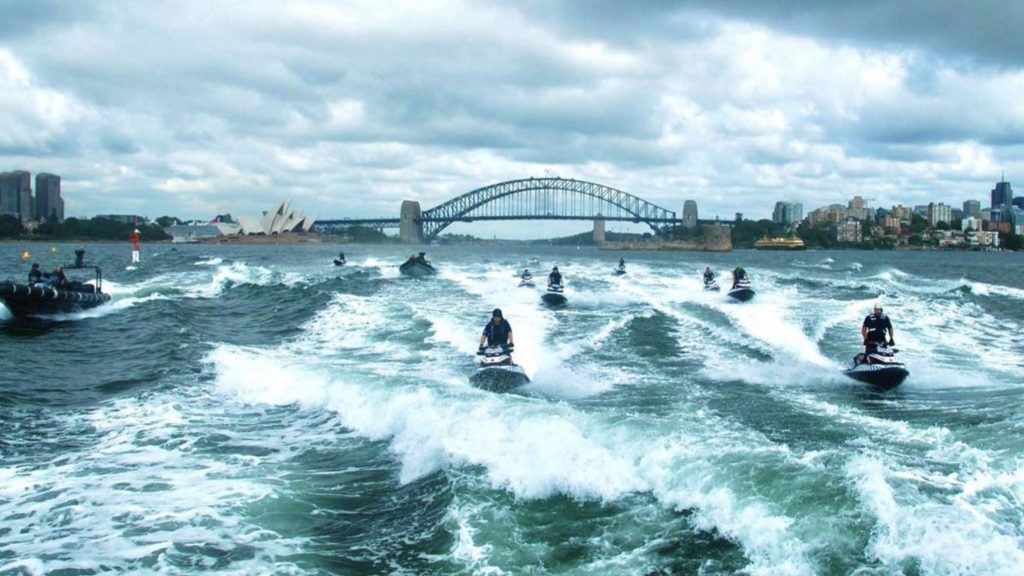On this day 20 years ago – 28 June 2001 – the NSW Government outlined in parliament the reasons behind its plan to ban Jet Skis and personal watercraft from Sydney Harbour, Parramatta River, and Lane Cove River.
At the same time the NSW Government introduced harsh new penalties and higher licensing and registration fees for Jet Skis and personal watercraft to boost funding for extra enforcement, and potentially discourage people from the sport.
Since then, however, the number of Jet Skis and personal watercraft in NSW has more than tripled, leading to seasonal overcrowding in other Sydney waterways where Jet Skis are permitted.
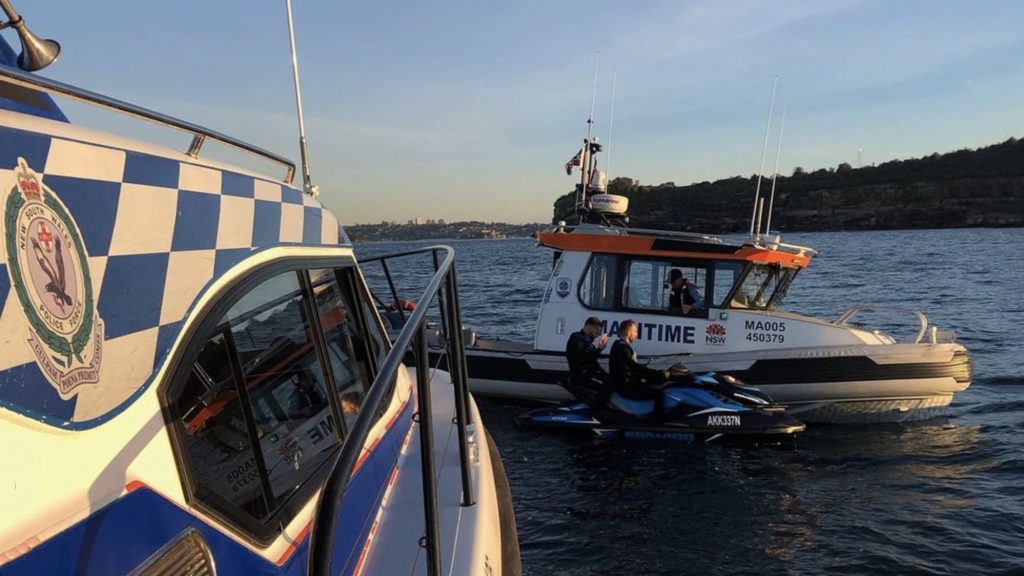
Above: NSW Police and NSW Maritime speak with two people on a Jet Ski stopped in Sydney Harbour in June 2021. Source: NSW Police Marine Area Command Instagram page.
The ban on Jet Skis and personal watercraft came into force from October 2001 and still stands today.
In that time, 14 Jet Skis have been intercepted on Sydney Harbour.
Today, the fine for riding a Jet Ski on Sydney Harbour is $500 in the first instance and $750 for a second offence. Since 2016, NSW Police and NSW Maritime officers also have the authority to seize watercraft for dangerous riding or repeat offences.
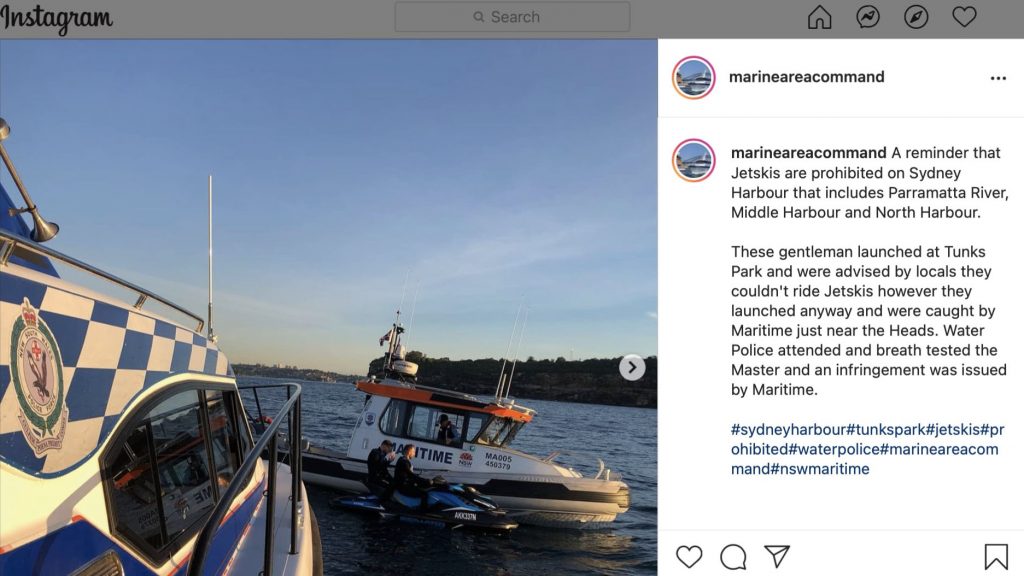
Addressing state parliament on this day 20 years ago, NSW Premier Bob Carr did not hold back on the government’s controversial stance – despite the uproar from enthusiasts who opposed the decision.
Mr Carr told the NSW Parliament: “As I have said on many occasions, Sydney Harbour is a working harbour. Ferry commuters pass fishing trawlers returning to their moorings after a night’s work. Cruise boats share the water with tugs and cargo ships. We still see a family out fishing in a rowboat or dinghy.
“It is the government’s responsibility to protect the harbour and to manage all those competing interests. The use of Jet Skis on Sydney Harbour raises some serious questions,” said Mr Carr.
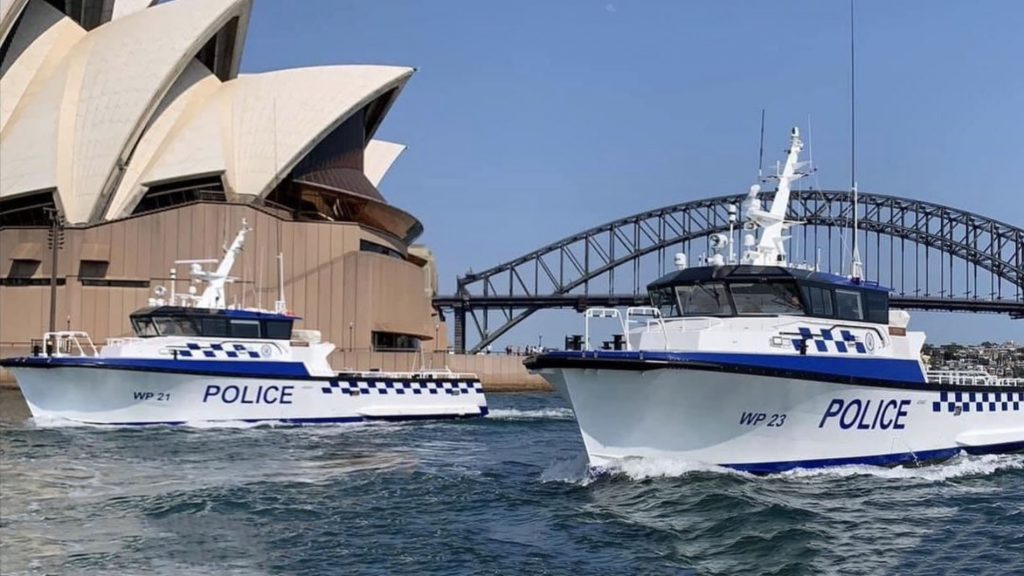
Above: NSW Police on patrol in Sydney Harbour. Source: NSW Police Marine Area Command Instagram page.
In the lead-up to Mr Carr’s address in the NSW Parliament on 28 June 2001, the premier’s office claimed: “While Jet Skis represent only 8 per cent of all boating licences, last year they accounted for 29 per cent of all complaints to the Waterways Authority, and 28 per cent of all infringements,” noting 551 fines were issued to Jet Ski riders in NSW in the year 2000.
After highlighting figures that showed the number of Jet Skis and personal watercraft registered in NSW between 1997 and 2000 had increased by 50 per cent, the NSW Premier commenced his damning assessment.
“To the people who ride them, Jet Skis are a fun, fast way to get around,” Mr Carr told the NSW Parliament. “To the water police, they are a drain on resources. To sailors, rowers, ferry masters and environmentalists, they are a headache and a nuisance. For a start, these craft are incredibly noisy.”
Mr Carr claimed “one study found they produced noise levels in the range of 85 to 105 decibels, rather like some of the noises heard in this (parliamentary chamber) from time to time. That is loud enough to require ear protection for prolonged exposure.”
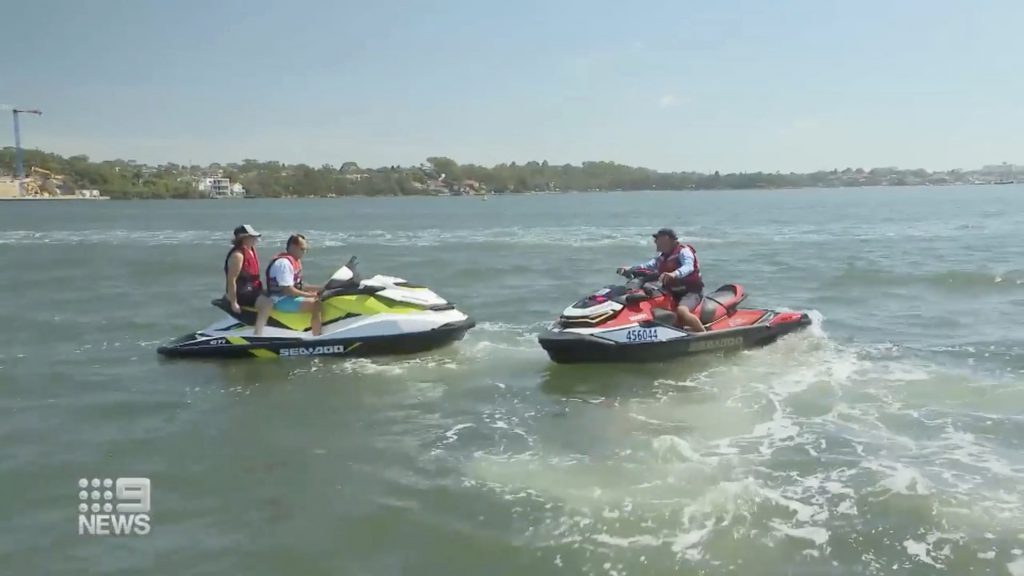
Above: A screenshot from a Channel Nine TV news bulletin about a safety campaign targeting Jet Ski riders. A NSW Maritime officer conducts a routine check (vessel registration obscured for privacy).
The NSW Premier also cited an incident – 18 months prior to his speech in the NSW Parliament – in which a woman swimming at Balmoral Beach was hit by a Jet Ski.
“The rider abused her before speeding off,” said Mr Carr. “Last year there were 551 incidents involving Jet Skis in the state. In one incident, police issued an infringement to a Jet Ski rider who was travelling at 25 knots in an 8 knot zone.”
Mr Carr said water police had reported dealing with “groups of 50 jet ski riders gathering in hot spots such as Hen and Chicken Bay in the Parramatta River and Balmoral and Clontarf in Middle Harbour.”
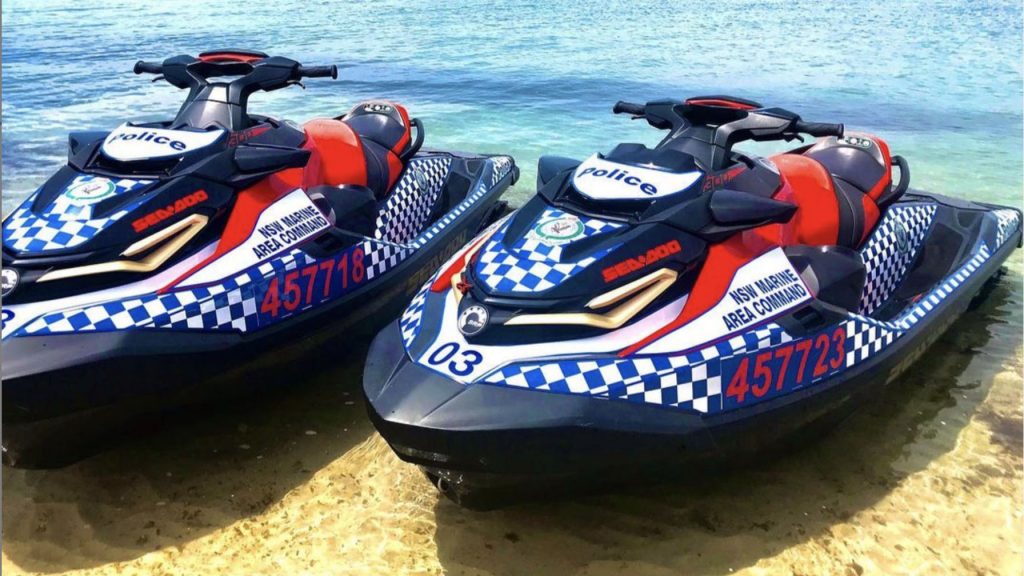
Above: NSW Police and NSW Maritime also use personal watercraft for their patrols. Source: NSW Police Marine Area Command Instagram page.
“On one occasion at Hen and Chicken Bay,” Mr Carr told the NSW Parliament, “a can of petrol was held over a police vehicle with the offender threatening to set it alight after the police had intervened on the way to fine people who had been abusing (the use of) Jet Skis.”
Mr Carr said in April 2001 the NSW Police Marine Area Command “advised the government that Jet Skis should be excluded from all of Sydney Harbour.”
“In the overall scheme of things, Jet Skis just do not fit in,” Mr Carr told the NSW Parliament. “With the noise they generate, the high speeds at which they travel, the risk they pose to public safety, the threat to the environment, and the absorption of police time, these watercraft are clearly incompatible on a busy waterway that is also a precious gift to our environment.”
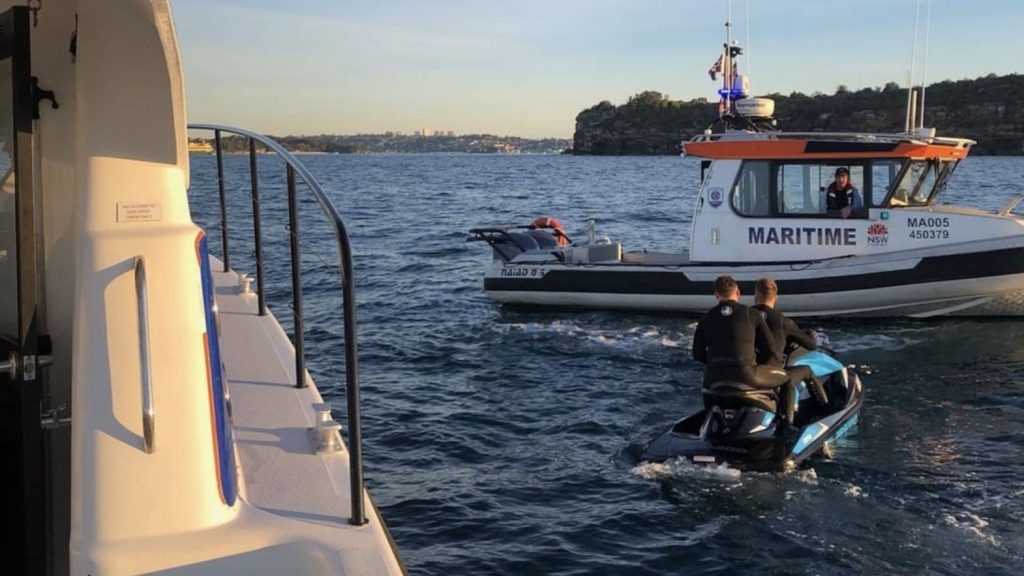
Above: NSW Police and NSW Maritime speak with two people on a Jet Ski stopped in Sydney Harbour in June 2021. Source: NSW Police Marine Area Command Instagram page.
Mr Carr then used an extreme example to underline his position.
“People cannot ride motorbikes at high speed around public parks,” Mr Carr told NSW Parliament. “From October (2001) the government will ban Jet Skis from Sydney Harbour, from Parramatta to the Heads, including Middle Harbour and the Lane Cove River.”
Mr Carr said the ban will apply to “all personal watercraft colloquially known as Jet Skis” and indicated they would be easy for authorities and other waterway users to identify.
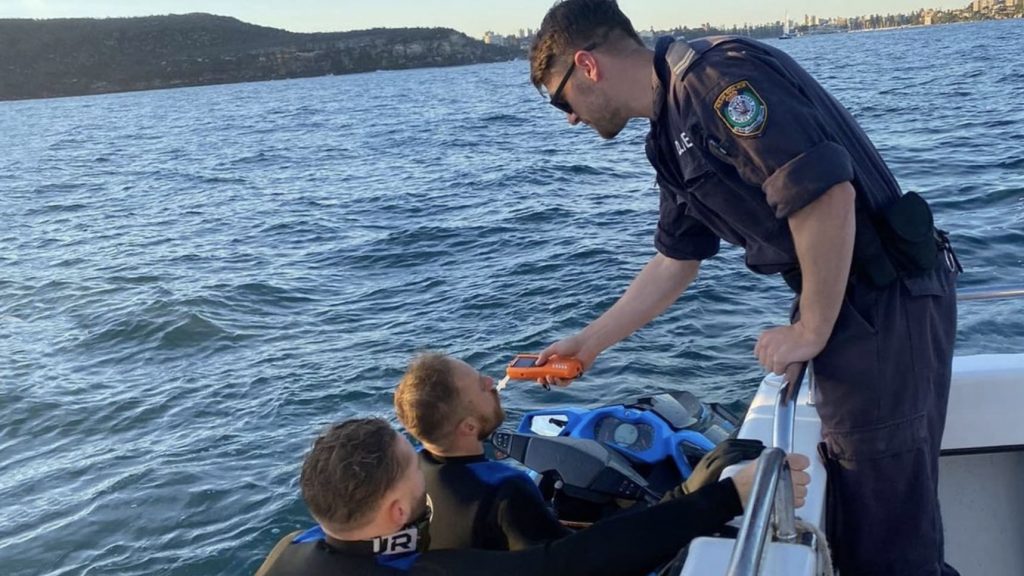
Above: NSW Police conduct a routine breath test on the water. Source: NSW Police Marine Area Command Instagram page.
“Jet Skis are power-driven vessels (typically) not more than 3.5 metres in length with an in-built propeller,” said Mr Carr. “A Jet Ski has a fully enclosed hull, and is designed to be operated by a person standing, sitting astride, or kneeling on the vessel.
“People will know what I am talking about if they are on the harbour after October and they see an offender,” Mr Carr continued. “We will do what governments in other jurisdictions have already done. We will make the harbour off-limits,” said Mr Carr.
The NSW Premier then used Jet Ski bans in certain parts of North America as a precedent for the decision.
“I learnt on the internet that in the United States of America, Jet Skis are banned in 66 of 87 national parks, and the ban will be extended to all parks by September 2002,” Mr Carr told the NSW Parliament.
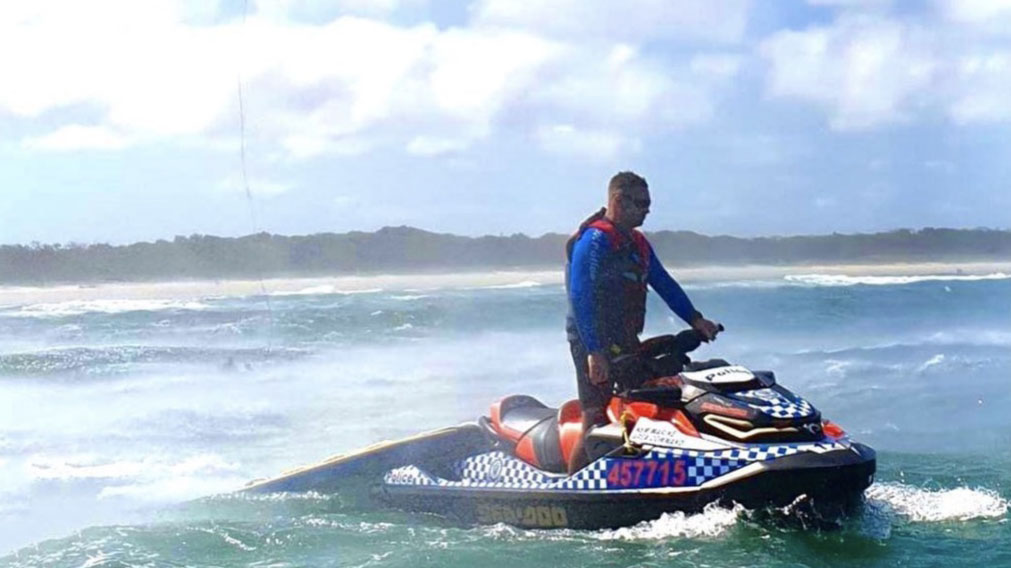
Above: NSW Police and NSW Maritime also use personal watercraft for their patrols. Source: NSW Police Marine Area Command Instagram page.
“Starting this summer, they will be banned on Sydney Harbour. Licence and registration fees will double. The cost of a three-year licence will go from $109 to $218. The registration fee will go from $105 to $210.”
Licensing and registration costs for Jet Skis and personal watercraft have since climbed way beyond these figures, and NSW now has among the highest fees – and among the biggest disparity – compared to charges applied to other forms of boating.
Mr Carr was unapologetic, telling the NSW Parliament on 28 June 2001 the increase in fees “will fund education and enforcement, not only for the harbour but for waterways around New South Wales.”
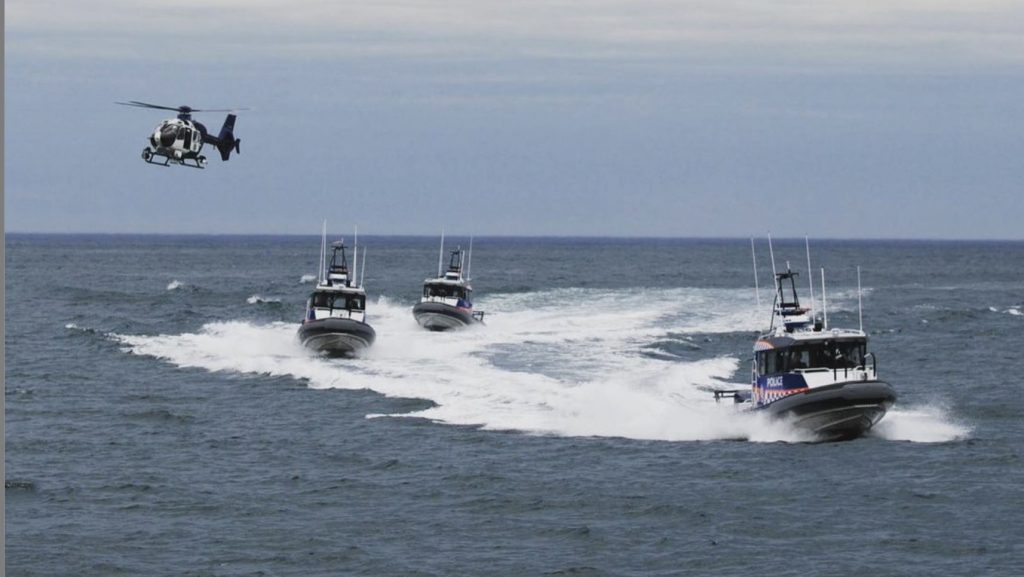
Above: NSW Police have increased resources on the waterways. Source: NSW Police Marine Area Command Instagram page.
The NSW Premier also said Jet Skis would be “closely monitored in other areas such as the Central Coast, Georges River, Botany Bay, Pittwater and the Shoalhaven.”
“This decision has not been taken lightly,” Mr Carr told the NSW Parliament. “It has been taken on police advice after complaints and many incidents of concern, and after excessive investment of time by the Waterways Authority and by the police.”
In closing, Mr Carr said: “With the steady rise in the number of Jet Skis we run the risk, if we allow the use of (Sydney Harbour) to continue, of our harbour turning into a speedway. These craft are a risk to the public. They are a risk to the environment. They do not belong on the greatest harbour of all.”
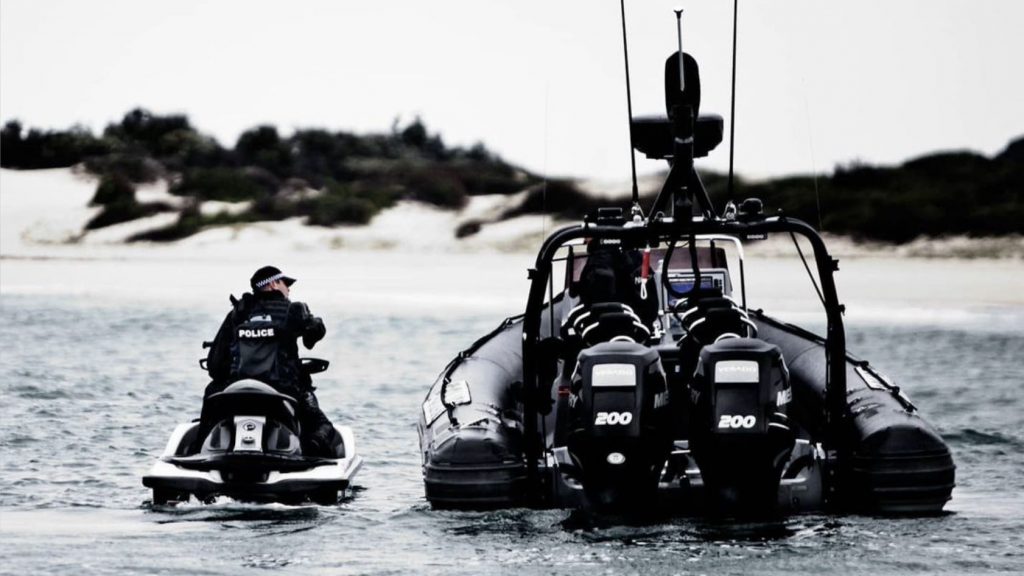
Above: NSW Police use a wide choice of watercraft. Source: NSW Police Marine Area Command Instagram page.
In November 2001, one month after the Sydney Harbour ban was introduced, the NSW Premier was not swayed by a large protest that saw approximately 80 Jet Skis towed behind cars that began circling Parliament House.
Numerous protests have been mounted and petitions signed in the two decades since the introduction of the Jet Ski ban on Sydney Harbour, but successive governments have been reluctant to repeal the law.
Instead, the ban has led to an increase in complaints of overcrowding in other waterways north and south of Sydney Harbour as the sport of Jet Skis and personal watercraft has grown, particularly since COVID-19.
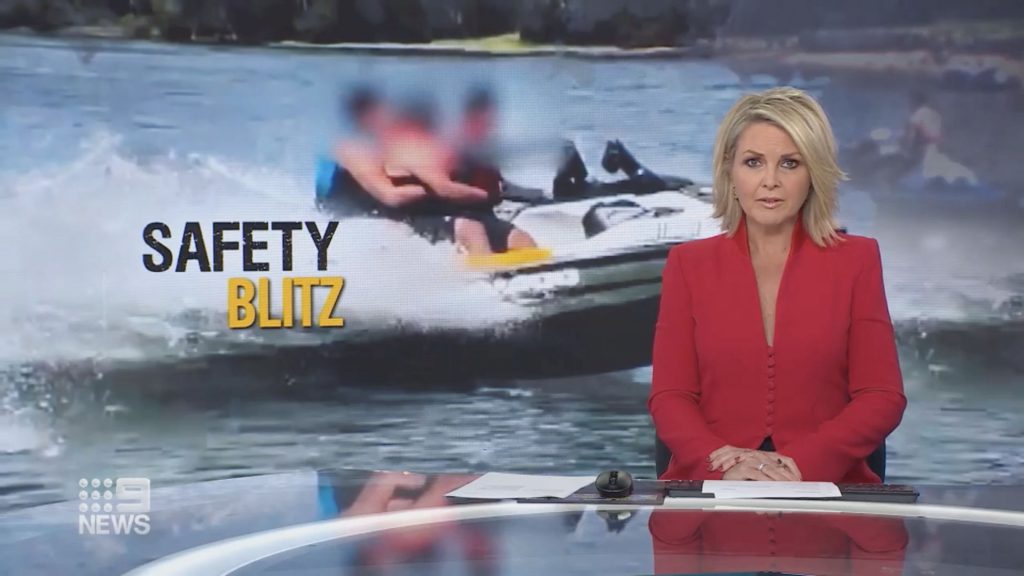
While modern Jet Skis and personal watercraft are not as noisy as they were 20 years ago – and are more fuel-efficient and less polluting – the increase in commercial and recreational boating traffic on Sydney Harbour means it’s unlikely the law will be relaxed anytime soon.
In the meantime, NSW Police and NSW Maritime continue to launch high profile safety campaigns (such as the Channel Nine example shown above), targeting Jet Skis and personal watercraft throughout peak seasons.
Some veterans of the Jet Ski community believe personal watercraft should be given a second chance and allowed back on Sydney Harbour – suggesting the easing of restrictions could come with harsh penalties or even confiscation of the watercraft for even minor offences.
However, for now, there appears to be no appetite among authorities to change the Sydney Harbour Jet Ski ban as it stands.
MORE: Follow us on Facebook so you don’t miss any future updates
MORE: Authorities intercept two Jet Skis on Sydney Harbour in six months
MORE: State by state comparison shows NSW has among the highest fees for Jet Skis
MORE: UNSW studies the impact of COVID on Jet Ski safety
MORE: Boaters – not Jet Ski riders – at greater risk of death on the water
MORE: All our news coverage in one click
MORE: All our Yamaha coverage in one click
MORE: All our Sea-Doo coverage in one click
MORE: All our Kawasaki coverage in one click



